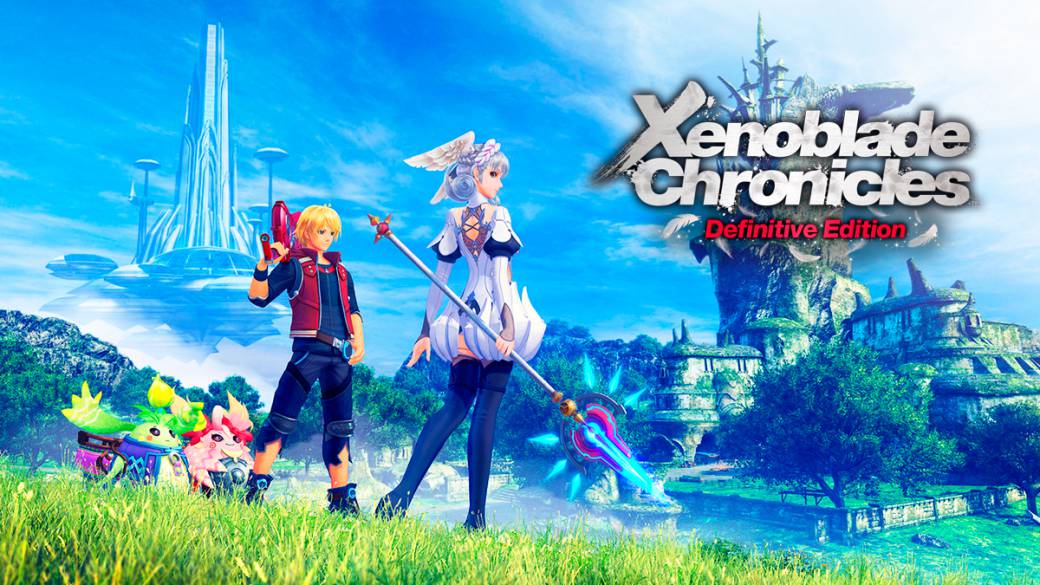
Xenoblade returns improved and expanded to once again claim its position among the best modern JRPGs. To what extent does it succeed?
The prospect of explaining the Xenoblade Chronicles plot with the fewest guts possible in the middle of 2020 has its funny point. Within a few months of the decade since its original release in Japan, the game has already gone down in history as an institution of the genre, the stone on which Monolith Soft has built its new church. It may be something soon to enter into religious analogies –even talking about a Xeno–, but with two installments and one more expansion in the market, “million-seller” figures, assistance to other great Nintendo productions and the always significant representation in Super Smash Bros., there is no doubt that the Shulk adventure has changed things for a studio that not so long ago created games so niche that their locations almost seemed to be decided heads and ends. Now Sakurai can freely gut one of his main revelations in a special attack that will see millions of players out of context because, more or less timely, it is still a compliment to their cultural footprint.
Luckily for the newcomers to the saga or this specific installment (veterans can jump to the last couple of sections if you are only interested in the changes and the content of Future Connected), here we are going to contain something else. Not because of a simple matter of common sense, or because an embargo recommends it, but because the value of Xenoblade does not reside so much in the small detail – a death, a discovery, a betrayal – as in the great image that is gradually drawn , sometimes thanks to fragments that are not even collected on the main path. Being on its skeleton a moderate budget Wii JRPG, there are limitations and rough edges that even this Definitive Edition cannot completely alleviate. With this we refer to a series of technical, design and staging aspects that we will be dealing with throughout the text, but that ultimately do not destroy the virtues because, like an untimely gutter, they represent a small percentage of something charged by a different entity when evaluated as a whole.

Robots, swords and determinism
To be fair, Xenoblade Chronicles is also not a game that hides its script twists too suspiciously. Like many other illustrious authors of the genre, in the past Tetsuya Takahashi demonstrated both his taste for convoluted stories and his knack for keeping them interesting for dozens of hours even under conditions that were far from optimal – Xenogears can still be defined as an example. quintessential gameplay unable to tackle its own narrative scale. But that is not the case with Xenoblade. In fact, it is practically the opposite: the game comes first, be it in terms of combat mechanics, interaction with other characters, exploration through extensive natural landscapes. The turn of the revelations, important to reinvigorate the plot development, comes later, but they are not such an important engine, nor are they contorted to satisfy that addiction to effect that some creators or fans of JRPGs may have.
The truth is that Xenoblade advances with different degrees of subtlety – sometimes very little – almost all its surprises because it prioritizes coherence and because it establishes a small psychological game with the expectations of a player who, like Shulk, opens windows to the future thanks to the Monado sword. Like many other things in the game, these visions serve a double function when it comes to intertwining narrative and gameplay, but they also serve to explore the concept of determinism and propose another type of duality. Although seeing the future is a god-worthy skill – an inescapable figure in Takahashi's work – the real power lies in the ability to alter it, something Shulk may or may not achieve depending on the situation. This creates an interesting conflict, especially as Monado reveals more powers and acts as literal as well as well-integrated deus ex machina – and therefore not really deus ex machina in the usual sense -: success denies fatalism (the notion of inevitable destiny), but failure arises from a lack of anticipation or understanding that makes the hero feel more responsible than he would be under normal conditions.
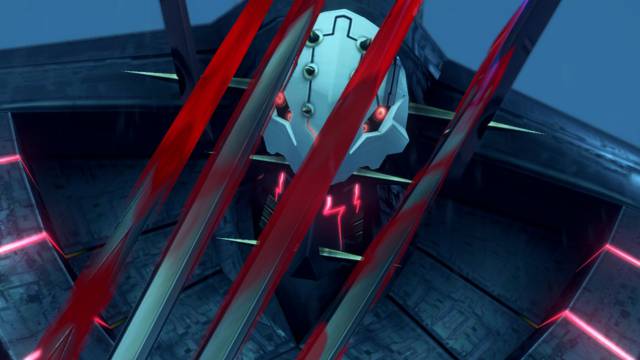
The line separating omniscience from omnipotence defines both the Shulk path and some of the larger themes that are only revealed when we gain a better understanding of the nature of the world. Because something that novices and veterans will surely already share is the knowledge that Xenoblade does not take place on the typical planet or flat map, but on two inert titans whose bodies have different architectures and ecosystems depending on factors such as size, inclination or temperature of each part. It is a unique concept, which motivated development in the first place and which even now, almost ten years later, is as original as it is well executed. Its antagonistic condition, in addition, is the first and most important conflict introduced by the game, since Bionis is the cradle of organic life that includes – but is not limited to – humans (humans, go), while Mekonis houses mechanical beings, too self-conscious and more technologically advanced, initiating attacks with catastrophic consequences.
This rivalry, of origin long before the present account, serves as a catalyst for the adventure of Shulk, a human scientist with two attributes always grateful in the genre: he is not a teenager yet forming his identity – an aspect that does end up being important, but not because Matters of age – not even moved by the altruistic spirit that pushes so many protagonists to save the world. The reason why both he and his friend Reyn start the trip is much more prosaic (desire for revenge after one of the attacks), and it is not until the group increases and the player's horizons are expanded as much as that of the Shulk himself that the story begins to take a somewhat more topical look, but still interesting thanks to the mysteries of Monado and the careful construction of the world. The verticality of Bionis not only offers new types of landscapes where previous or future areas can be seen in the distance, it also proposes a literal ascent through regions inhabited by different races, with different cultures, which in some cases intersect for the first time. And they need to create new bridges if they want to collaborate in the face of a common threat.
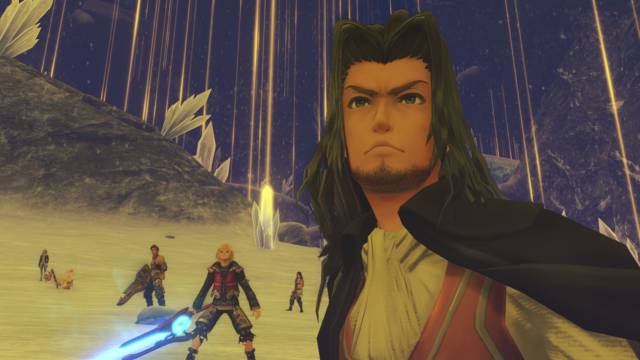
Therefore, the first part of the game is essentially a “road trip” that can be reminiscent of the structure of quite a few JRPGs, such as the first Baten Kaitos of Monolith Soft itself, where each region had its small bow and provided a member new to the group. After the equator, however, Xenoblade begins to swing a little further towards the usual terrain of Takahashi. With the entire group and tens of hours of exploration by Bionis behind us, the plot disrupts that familiarity and introduces new perspectives, new conflicts, new dilemmas for the characters. For obvious reasons we are not going to go into the details, but the way the script manages its villains allows the epic to be extended – and it is not a saying, at the end of the road it is seen as such – without losing freshness or the ability to surprise . The result is the kind of trip that for many will manage to evoke that time when the JRPGs came on several albums and it was inevitable to wonder how noses would fill the following ones after taking more than 20 hours to finish the first one.
Walking Between Titans: Rhythm and Structure
Estimating the duration of Xenoblade is, in fact, a somewhat complicated task because the variation from player to player can be enormous. But even ignoring the vast majority of side quests (all of which is inadvisable because it would result in some difficulty imbalances, though we'll cover this later), going over 60 hours on our way to credits sounds like a reasonable forecast. It is a long, very long game. But it is also one that knows how to justify its duration with a surprisingly light development under the circumstances – that is, compared to large-scale JRPGs, obviously not with shooters or beat 'em ups of just a few hours. Part of this lightness arises from the argument itself, which not only pushes us between regions with relative speed, it also manages to alternate frequently between different types of setting and – as or more importantly – structural design to maintain varied development. The first part of the game in particular establishes an almost musical rhythm when it comes to inserting towns, esplanades and the occasional interior dungeon.
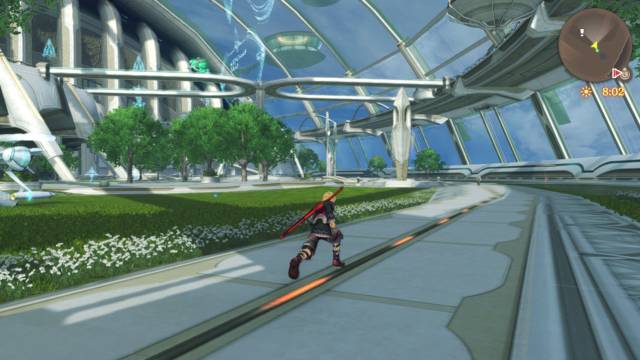
This also does not mean that Xenoblade is predictable, it is not that the distribution of content is bracketed by identical cycles, but there is definitely a systematic approach in its way of approaching progression. The size of the zones and the sequentiality of the climb by Bionis complicates the implementation of the world map in use – the return to previous regions is done via the menu -, so any feeling of linearity is tried to mitigate from the design. The leg of Bionis, for example, offers open exploration in two enormous plains located at different levels of height, surrounded by roads or peripheral caves with high-level dangers that encourage a later return; the ether mine that goes right after it works like the classic dungeon with closed spaces, ramifications, more crowds of enemies and a vertical advance that breaks the tendency of the leg; and then, upon returning to the surface, the Satorul mangrove regains horizontality and alleviates claustrophobia, but it makes a difference with the leg by proposing a much more rugged orography, in addition to a radical environmental change between day and night.
That said, this is where we can start looking at Definitive Edition as a current product, because this variety and scale have a certain counterpart in a somewhat uneven design of wealth: the leg itself, overwhelming as it was on Wii, now shows less complexity and density that the plains of Primordia in Xenoblade X or the province of Gormott in Xenoblade 2. And it is not a mere graphic matter – although it is true that the level of detail also remains below subsequent deliveries despite the painstaking modernization process – but a limitation at the structural level. An easy example to illustrate it is in Ocarina of Time 3D, which once received an update similar to that of this Xenoblade and once again sneaked into the best of a technological generation after yours thanks to the design of dungeons, the rhythm progression and working with characters on two different timelines. What surely no novice player (in 3DS) considered was that their countryside, formed by a simple plain around the Lon Lon Ranch, was somewhat above the modern standard, and more or less that is what is happening again now with some of the most overwhelming scenes of yesteryear.
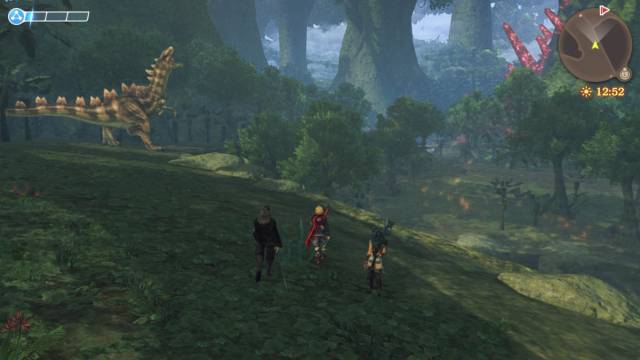
Areas like the Makna jungle, the Valak massif or even some urban environment like Alcamoth needed to simplify things in terms of geometry to spread as far as they extended, which in the Wii framework was a logical and necessary sacrifice, but on Switch It is more noticeable despite tweaks to the polygonal load and a completely new texturing. We must insist, in order not to create the wrong idea, that Monolith Soft's work with Definitive Edition is exemplary. As a renovation halfway between the remaster and the remake it does set a new standard for Nintendo, superior to that seen in The Wind Waker HD or Twilight Princess HD during the Wii U stage. The problem is that precisely Monolith, be it in their own games or where he attended other studies – identifying landmarks in Breath of the Wild has more of Xenoblade than Zelda – he's kept pushing the bar ever since, so it's hard to go back and marvel at creations the same way now. past if they are based on the same design philosophy that they have been refining into more powerful hardwares for years.
First-time restriction
That being said, important for players interested in getting started after playing newer, more technologically advanced titles, our intention is also not to say that the game is outdated or is no longer recommended. On the contrary. Just as the Hyrule countryside dates, but doesn't spoil the experience with Ocarina of Time, just because Xenoblade isn't at the forefront of sprawling, sprawling environments doesn't mean it doesn't still have a lot on its side, sometimes even above their successors. Without leaving the level design arena yet, one thing you can boast of is that, while it may not have the peaks of other Xenoblades, it is somewhat more consistent in maintaining that pace of zone entry and diversification. Without naming specific places, the final stretch decides to turn different gears and approaches the dungeon crawler terrain a bit, which on the one hand reinforces its variety compared to Xenoblade X – almost always focused on open spaces – and on the other allows you to look at you to you to a somewhat simpler and linear Xenoblade 2 in the equivalent section.

Another factor to consider is a kind of restriction that at the time could have been the result of limitations – technical, artistic or economic – but now it will surely be worth the affinity of players perhaps not so comfortable with the direction in which Monolith has pushed Soft on certain things. Taking up the plot and, above all, the staging, the return after Xenoblade 2 also shows a somewhat more sober tone. From the script to the character design to the action choreography, they portray a game a little less prone to anime histrionics. With this we do not want to attribute a negative connotation to the sequel either, because it is completely subject to taste. Nor to imply that Xenoblade lacks frivolity or spectacle, because it is certainly not the case. From nopon humor – whether you like it or hate it – to statements about the power of friendship or stylized displays of Monado's abilities, the Shulk and Rex universes are clearly twinned in more ways than one, although both melodrama and the energy of the former is kept in a lower profile.
Of course, this moderation, although supported by a solid script and a good dubbing in both Japanese and English – here Shulk definitely wins the game for Rex -, also coexists with some animations reminiscent of the PS2 era. This is only partially a consequence of its origin in Wii, since the climatic sequences unfold a level at times at the height of the Switch novelties. The imbalance does not arise so much from a technological limitation as from the need to create a library of basic animations (walking, turning, gesturing at rest) easily implementable in the dozens and dozens of daily sequences where for the vast majority of studies it would not be a goal. Realistically customize each interaction. It may sound petulant to dedicate a paragraph to this, everyday bread in large-scale JRPGs – including the other Xenoblades – but it's a pretty eye-catching phenomenon here because, ironically, the great work improving on the original skeleton results in a somewhat anachronistic relationship between the quality of the modeling and its occasional robotic movements. More, for example, than in the restoration of Final Fantasy XII that Switch received last year – although less retouched, the original production values were higher and it deploys a higher level in that specific facet.
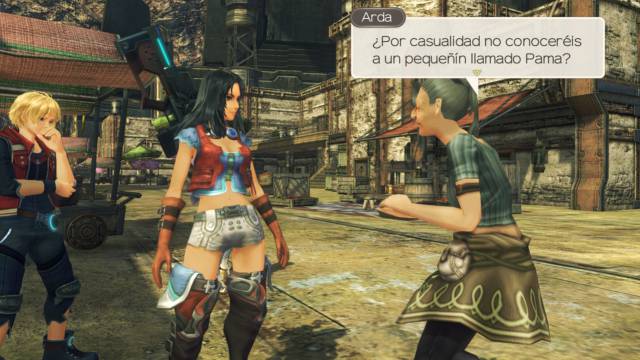
Combat fundamentals: MMORPG without MMO
For the record, the sudden mention of Final Fantasy XII is not on a whim because it helps us to go into combat and see how it relates to exploration, character management or participation in countless side missions. Here things get complicated, but not in a negative sense, but more literally. Because although this also applies more restraint than its sequels, the first Xenoblade already put so many things on the table that it is easy to feel somewhat overwhelmed even when returning in 2020. That is why we will use FF XII as a shortcut, because both share that philosophy of "MMORPG offline" that has not always won over fans of the more traditional JRPGs, but that works to keep the player always on the move, going from fight to fight without interruptions or depriving him of strategy and depth for it. The combination of direct control over the character, automatic normal attacks and rechargeable manual arts means that positioning is important, but statistics and a good knowledge of the internal systems continue to decide the outcome of each combat.
Shulk, as the main protagonist and carrier of Monado, is the default choice and the most recommended to start because it has two clear advantages. The first, that a large part of its arts increase effectiveness depending on its position with respect to the attacked enemy, be it front, side or rear, so there are always incentives to move and be more proactive in combat. This contextuality is detailed through the drawing of the arts themselves – which in their case already tend to be swords in different positions -, a little intrusive description in the interface and, as a novelty of Definitive Edition, a blue indicator that only appears at the moment in which choosing any art offers some advantage. Of course, these opportunities in turn depend on a mechanic called rage, which governs who attacks each enemy and can be manipulated with arts that attracts or rejects it, becoming one of the fundamental factors when deciding which characters accompany Shulk as soon as the available options start to increase.
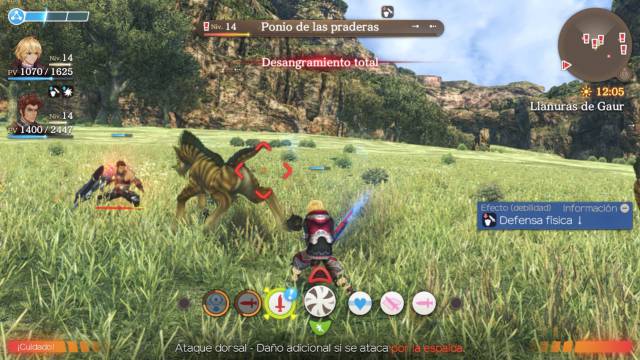
Then the arts are also color-coded to identify another extra function, sometimes related and sometimes independent of position. The red color, for example, allows you to instantly recognize offensive commands; orange, status auras; and blue, more diverse techniques such as cures or rage detours. Most of these gears work on their own, but the pink ones also introduce scaling by different states: if their common function, checkout, works, a countdown will start during which a green gear will knock down, opening thus a second account during which an art of yellow color will culminate the chain with a daze of the enemy. Since Shulk does not have those three colors in his repertoire, the sequence is only completed with the assistance of one or more AI-controlled companions, who "read" each situation well, but are governed by the same limitations and waiting times in the use of arts. Therefore, although not directly, success remains in the hands of the player due to the need to increase availability by building a team that adds several options and the individual improvement of each art to accelerate regeneration.
On paper it may sound confusing, but in practice the mechanics are introduced gradually, the game does a good job with the tutorials and now, in addition, the commented blue indicators (second-hand arts) also assist in making chains – although they can be deactivated if we do not want so much help. Once the basics are internalized, what takes up a few sentences here in the game runs in a couple of seconds, so it's easy to get into an efficient routine and even dare to rotate to experiment with the other characters. They are all different and useful in one way or another, and it is even viable to make a team without the Shulk himself except in very specific sections. Although not to mess things up, we will continue with him because there are still important mechanics in the pipeline: personal arts and visions. Personal arts are techniques unique to each character that occupy the central position and, unlike the others, are not loaded over time, but as we make normal attacks. If you remember, before we said that playing with Shulk had two advantages, and right here the second one appears. Because in your case personal art is not a simple technique, but access to another submenu with the Monado arts.

As we anticipated before, these skills are introduced through the plot and then remain in the repertoire. Its functions range from enabling the damage of any weapon against Mekonis robots to creating shields around our companions or nullifying enemy auras that act as a defensive countermeasure. In addition to useful second-hand gear, Definitive Edition has also implemented a new indicator in the form of purple spikes that alert from the marker of the name of rivals with this kind of peculiarities. And then, of course, there are the visions, which don't really require having Shulk on the main team, but theoretically they exist because of his presence in the group. As the name implies, they are brief sequences that anticipate an imminent attack with effects of some importance, be it the death of a character or another disability. These visions can be somewhat intrusive, especially against tough enemies that activate several in the course of combat, but introduce another tactical element by establishing a short-term priority – heal, use shields, manipulate rage – and also allow direct orders to be given. our colleagues to change that possible outcome.
And this brings us, finally, to the group bar. This indicator, located in the upper left corner, is divided into three fragments that are filled by executing arts with their optimal effect and animating the other members at certain times – an icon appears for it. Each one of these fragments can be exchanged to revive a fallen ally or choose an action from its repertoire if we are under the warning of a vision. But if we let it fill completely, we can exchange all three fragments at once, paralyze time and enter a mode where we choose an art of each character in order. This is one of the most useful and important mechanics in the long run because on the one hand it increases the effectiveness of unprotection / knockdown / stun chains – to the advantage of manual selection it adds a gear regeneration – and on the other hand it introduces chains based on the color of the arts to multiply damage. The fun here is that: one, personal gear works as a wild card, allowing you to change the color of the string in the middle of the process; two, a correct use of gear resumes filling the bar, preparing the ground for future uses; and three, the affinity between characters allows the chains to be extended beyond the initial three turns.
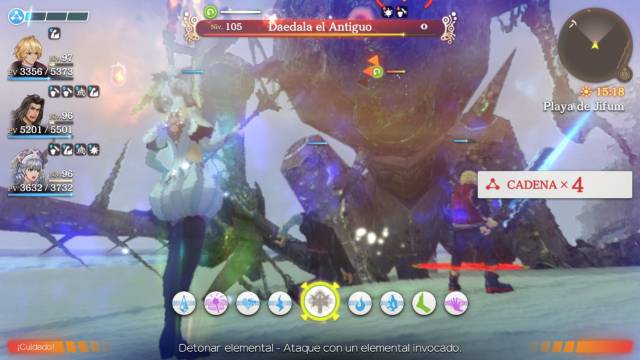
Affinity and intersystems: Everything is connected
Precisely affinity helps us to get out of fights, but without losing sight of them. Because although everything exposed so far may give the opposite feeling, the truth is that Xenoblade's combat, once mastered, is tremendously agile, requiring just half a minute to resolve most encounters – the bosses are another story, although they are not they lengthen like other JRPGs – and even restart health and altered states upon completion to keep us going. The key, in addition to understanding how these mechanics work and others that we will not enter for the sake of brevity – although it may be somewhat late for that – lies in the preparation. In the previous work managing equipment, improving arts and a long etcetera typical of the genre, but that in the case of Xenoblade has a particularity added by the intricate network of systems that relate the characters to each other and to the other inhabitants of the world. Because these statements about the power of friendship, trivial as they can be for the most austere palates, are also a cross-cutting theme that links narrative with mechanics.
In a sense, affinity works as a form of currency parallel to experience and money, as it is used in a series of interconnected and feedback activities. In the same way that animating peers and entering group chains increases the affinity to later increase the effectiveness of that same process, this increase also impacts the results of the refinement of crystals, in the possibility of assigning powers (passive improvements) from one character to another, or by unlocking optional conversations that allow them to get to know them better and – in case of choosing the right answers – continue to increase affinity to perpetuate the loop. Crystal refinement, as we are, is another of the most important systems in the game, since it allows you to convert objects dropped by enemies or extracted from deposits of ether into equippable gems. These gems are assigned in slots of the pieces of the equipment and report improvements as varied as more strength, amount of life, resistance to different states, running speed (remember this, because we will return to it) or agility, a fundamental attribute because it allows you to face enemies High level without dodging our attacks.
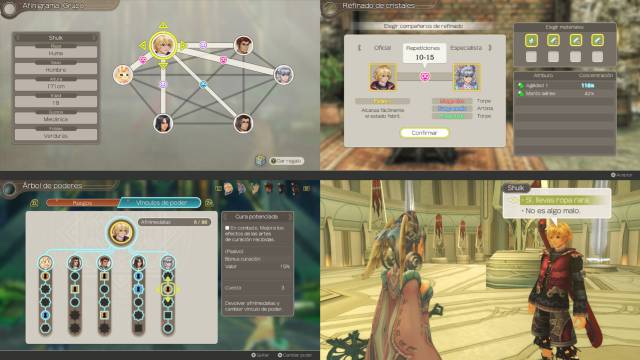
Another important source of affinity resides in the secondary missions, where dialogues are interspersed between the active components of the group – quite derivative, yes – when accepting and solving assignments. Of course, this only happens with those of a certain type, because here we have to introduce another important distinction: in Xenoblade, the secondary ones are divided between missions commissioned by anonymous NPCs –designated as “inhabitant of X place” – and missions commissioned by named NPCs own. The former are a simple apology for defeating enemies or locating objects on the maps, and are completed automatically upon fulfillment of the requirements without the need to return to the NPC in question to collect the reward. What in colloquial terms is usually branded as “filler”, content that is completely dispensable, but that fulfills a useful function if we want to complement the exploration with extra objectives – and benefits. Given its operation, we can accept all that we see when prowling cities, and from then on, indicators will appear on enemies or objects associated with those orders even if they are not part of a mission selected as a priority (this is a novelty of Definitive Edition).
The other missions, those with named characters, do have a bit more crumb. Mechanically, there isn't much difference either, except for a few exceptions, because ultimately Xenoblade is all about exploring, fighting, and continuing to explore. But what they do do, apart from encouraging getting off the main route – which covers a minimal fraction of what there is to see – is dressing the tasks with small stories that better outline the game world, delve a little deeper into the particularities of the different cultures of Bionis and weave a large network of connections between NPCs that gradually complete their own afigram. These characters automatically register when talking to them, even if they don't have anything to order at the time, and as we complete both available tasks and progress through the main story new missions appear, with new interactions, occasional decision-making, and even relocations. from characters to other towns –be it caused by our intervention or by predetermined plot events–. This afinigram, in addition, serves to track locations, schedules and personal barter catalogs of objects that also grow as we complete missions and increases the global affinity of each area.
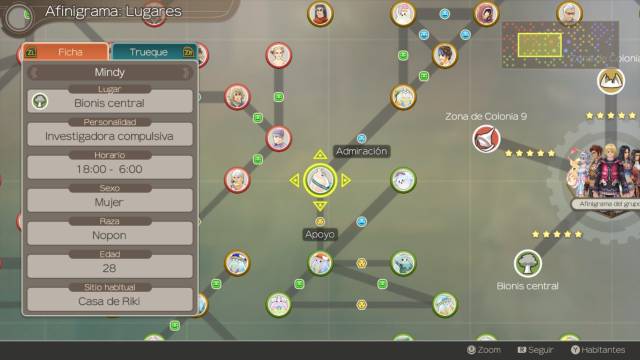
Definitive Edition: Many improvements and some missed opportunity
This section connects with the previous one, but we make the jump to once again receive those who know the original closely and have preferred to focus on the differences of Definive Edition. During the preview we already commented that beyond the complete retexturing or the improvement of some models – there are common enemies replaced by their versions of Xenoblade 2 -, the most far-reaching change lies in the renewed menu system and the ease of tracking the objectives of the missions. The main development was never lost by having an arrow indicating the general direction at all times, something that has now been refocused as a route of points in the minimap (GTA style). Side quests, on the other hand, often led to confusion by combining problems such as the absence of that same arrow, detailed information on the location of enemies or NPCs with routines that make them disappear during certain hours of the day and, of course, dependence RNG (random generation) in the distribution of objects that are identical in the scenarios until we collect them.
Definitive Edition alivia la gran mayoría de los inconvenientes gracias a ajustes como la implementación de esas mismas rutas de puntos en secundarias, el reparto de signos de exclamación por los objetivos –sean personajes, criaturas o ítems–, los antes comentados listados de trueques o la posibilidad de poner un marcador a cualquier NPC desde el afinigrama. Sin embargo, yendo un poco más al detalle, todavía queda margen de mejora, sobre todo a medida que profundizamos en la infinidad de misiones disponibles (más de 400, aunque algunas “caducan” y son irresolubles a partir de ciertos eventos). Por un lado, aunque ya no tan necesario, aún se echa de menos un bestiario que recopile imágenes, localizaciones y recompensas de cada enemigo. Además de incentivar el factor completista, algunos de estos datos facilitarían bastante ciertas búsquedas, en particular durante la reconstrucción de la Colonia 6, que ahora hace más accesible su lista de objetivos, pero no dispone del rastreo de las misiones normales y vuelve a caer en algunos de los problemas del original.
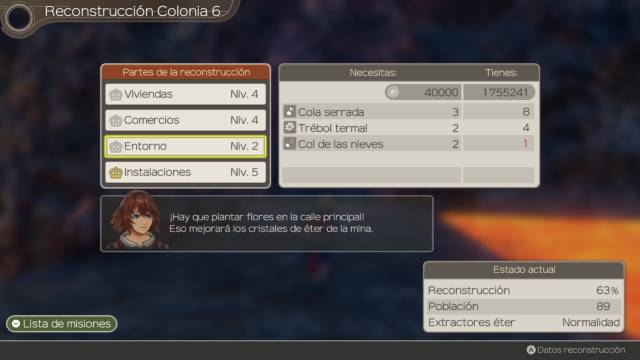
Algo parecido ocurre con la colecciopedia, álbum donde sí se clasifican los objetos de cada región para conseguir bonificaciones –esto ya estaba presente en el original–, pero sorprende que el estudio no haya tomado nota de su propia idea y lo deje sin un rastreador manual como en el que tienen los NPCs en el afinigrama. También algo problemático y sin retocar son los ratios que regulan la generación de estos objetos. Incluso sabiendo dónde se localizan por formar parte de una secundaria normal o por buscarlos en una guía –las de Wii aún valen, tiene eso a su favor–, algunos materiales siguen con un índice de aparición muy bajo y obligan a volver una y otra vez o trastear con la carga de partidas. Es algo que también se podría –y puede, queda la opción de parches futuros– haber mitigado con una revisión de las ventanas de trueque: aunque su presencia es muy útil, teniendo en cuenta que algunos de estos objetos no aparecen hasta que subimos la afinidad global de las zonas, otra alternativa sería incluir las opciones restringidas en otro color para así incentivar su desbloqueo. Son detalles pequeños por su cuenta, sobre todo al lado de aquellos sí mejorados, pero pueden causar un deterioro de la experiencia a largo plazo.
Algo a favor de Xenoblade es que, a diferencia de otros JRPGs clásicos relanzados en consolas modernas, la base original es lo suficientemente sólida como para no necesitar retoques radicales como un turbo que acelere la velocidad general o de los combates –aquí podemos volver la mirada a FF XII–. Además, al aplicar retroactivamente funciones inauguradas por sus secuelas, Definitive Edition se convierte en un popurrí más completo y el punto de entrada ideal para nuevos jugadores. Por ejemplo, de Xenoblade X toma tanto la posibilidad de asignar equipamiento estético –para que el aspecto de los personajes no dependa en exclusiva de la optimización de estadísticas– como la carrera automática, aunque lamentablemente no hay sprint y nos deja con la sensación de que también se podría haber ajustado la velocidad base. Se puede aumentar hasta un 25% con gemas, punto en el que la exploración de las regiones más extensas gana enteros. Pero, aunque es fácil no reparar en ello al empezar, tras acostumbrarnos al uso de gemas y volver atrás –bien por necesitar su ranura para otras de combate o bien porque algunas misiones nos hacen cambiar temporalmente a un personaje sin ellas– queda patente que el valor inicial se beneficiaría de un pequeño incremento.

Y es que, para bien o para mal, está claro que Definitive Edition es ante todo hermano de Xenoblade 2, y eso se aplica tanto a la carga narrativa como al diseño o la movilidad general. De la entrega más reciente es también de la que más cosas incorpora, como un modo experto que permite gestionar de forma manual la subida –o incluso bajada– de niveles, algo que en Wii era automático y podía crear desfases si hacíamos muchas secundarias antes de avanzar. Como contrapartida, también añade un modo relajado (fácil) que se puede activar en cualquier momento para bajar la dificultad. En el modo normal no tiende a ser muy elevada, pero dado que algunos jugadores pueden caer en el caso opuesto si quieren acelerar su progreso por la trama –hay instancias de jefes que suben bastante el nivel respecto a los previos en un lapso pequeño–, es una función que seguramente encontrará beneficiarios.
Por otro lado, ahora también se estrena un modo contrarreloj que, al igual que el modo fácil, en Xenoblade 2 fuera implementado post-lanzamiento –y como parte del Season Pass–. Es más o menos lo que suena, una serie de desafíos de dificultad creciente donde no conseguimos experiencia o afinidad, pero sí objetos muy útiles como gemas o equipamiento exclusivo para el resto del juego. Aquí cabe matizar que existen dos modalidades: una libre, que se puede “romper” al entrar con un nivel mucho más alto de lo recomendado alto; y otra restringida, donde no el juego no solo nos reajusta a un nivel específico, sino que además personaliza el grupo, su equipamiento e incluso el personaje manejado para que el jugador tenga que demostrar su conocimiento del sistema adaptándose a cada situación.
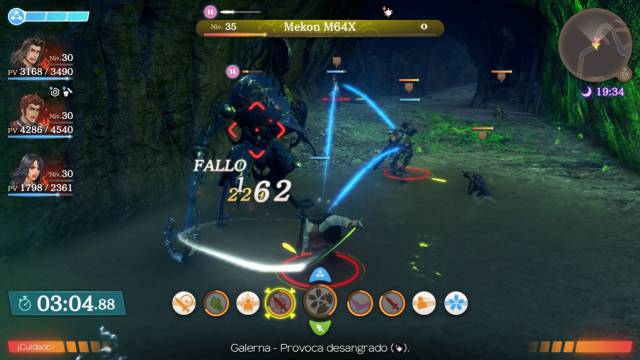
Por último, otro añadido heredado de Xenoblade 2 es la sala de proyecciones, menú desde el que podemos volver a ver las secuencias y las conversaciones de afinidad –útil para curiosear diálogos alternativos–, personalizando además detalles como condiciones meteorológicas o equipamiento de los personajes. Relacionado con esto, algo llamativa resulta la omisión del reproductor de música que había en la versión de New 3DS. Sorprende precisamente porque en Definitive Edition el equipo se ha tomado la molestia de revisar la banda sonora con nuevos arreglos. La original de Wii sigue como opción para nostálgicos, pero la nueva tiende a sonar más clara y natural gracias a cambios en la instrumentalización, nuevos acordes y pistas vocales re-grabadas a mayor calidad o incluso implementadas en temas donde antes no había. Bajo estas líneas dejamos algunas muestras para que os hagáis una idea.
Future Connected: Saldando cuentas con Melia, pero no con el rendimiento
Otro detalle que nos habría gustado ver implementado en el juego base, pero que de momento se queda como una particularidad exclusiva de Future Connected, es la del nivel recomendado para cada misión en el menú de secundarias. Al menos su aparición invita al optimismo de cara a próximas entregas. La paradoja de Monolith Soft es que se mueve en semejantes términos de escala y ambición que a veces pierde de vista las cosas más sencillas, los detalles que mejoran la calidad de vida con relativamente poco esfuerzo. Así que cada vez que da otro de esos pequeños pasos en la dirección correcta, aumentan las expectativas yendo hacia delante. Dicho eso, como pequeña aventura en clave de epílogo, Future Connected tenía la ventaja de que prácticamente cualquier contenido nuevo, aunque no pasase de unas pocas secuencias, iba a ser bien recibido. Tantos años después del lanzamiento original y con el contenido ya desbordando sin necesidad de añadir nada, seguro que pocos esperaban que Monolith Soft fuese más allá y convertiese una actualización gráfica y jugable de esta clase en una tardía “versión GOTY” con su propia expansión incluida.
Claro que después del lanzamiento de Xenoblade 2, argumentalmente independiente, pero al mismo tiempo guiño guiño –ahorramos detalles porque la conexión es algo que se debe descubrir jugando–, el anuncio de Future Connected probablemente también disparó la imaginación de los fans de un modo que ahora puede volverse un poco en su contra. En palabras del propio Takahashi, esta ampliación tiene relevancia para el futuro de la saga, aunque al jugarlo de primera mano, con el contexto actual, sus prioridades se concentran sobre todo en el presente. Como aventura de pequeña escala destinada a jugarse justo después de terminar el juego principal –se puede antes, pero no es recomendable porque suelta destripes desde la secuencia introductoria–, Future Connected centra el foco en sus personajes, particularmente Melia, para ponernos al día sobre el universo Xenoblade desde una perspectiva íntima y bastante distendida. Su objetivo no es sorprendernos con grandes revelaciones ni escalar de nuevo el conflicto hacia cotas comparables a las del juego base, sino mostrar que no todos los problemas se solucionan de golpe tras los créditos, y que los protagonistas siguen con sus vidas a pesar de ello, reflexionando, aprendiendo e incluso haciendo frente a algunos traumas del pasado.

El hecho de centrarlo en Melia es una decisión inspirada teniendo en cuenta su arco a lo largo de la historia principal y que reintroducir el mundo a través de sus ojos permite dar a la aventura un tono algo más maduro a pesar de la levedad general. Tanto Shulk como Kino y Nené –hijos de Riki que en combate cumplen los mismos roles que Sharla y Reyn– se apuntan para darle la réplica y tener esas interacciones más desenfadadas marca de la casa, pero prácticamente todo el argumento gira en torno a las dificultades de la raza éntida, dejando el “futuro conectado” como un hilo de fondo que motiva los eventos, pero no acapara realmente el protagonismo. En ese sentido, algún fan puede sentirse decepcionado, pero la expansión es sólida en cualquiera de los casos. El hombro de Bionis, enorme región descartada del juego original, se ha rediseñado y repoblado para albergar una cantidad considerable de contenido. Terminarlo puede llevar en torno a 6-8 horas, aunque la cifra se dobla si queremos descubrir cada rincón y cumplir cada misión.
Es cierto que esta extensión depende de un notable reuso de material. Aunque hay melodías nuevas para combates y exploración, las secuencias casi siempre recurren a las conocidas. Y en términos de enemigos, solo un par de excepciones evitan que toda la selección esté sacada directamente del juego principal. El cambio más significativo, además de una nueva variante de criaturas más poderosas (los nebularios) y algunos retoques en el sistema de mejoras (las gemas ahora se extraen de los yacimientos de éter y los niveles avanzados de artes se compran con las medallas que sueltan los enemigos únicos), reside en la figura de los ponspectores. Estos nopon se reparten por todo el mapa y, tras encontrarlos y cumplir sus encargos, se incorporan al grupo con rol pasivo a la espera que llenemos la barra de grupo del mismo modo que en el juego base. Una vez completada y activada, los tradicionales ataques en cadena dejan paso a los combos de ponspector, breves secuencias donde a mayor precisión pulsando el botón B en el momento adecuado, mayor efectividad del combo en cuestión –que puede estar orientado a infligir daño, aturdimiento o curar al equipo–.

Es un acomodamiento acorde al resto de Future Connected, que dado su formato más concentrado no puede introducir la profundidad de una entrega completa o incluso de una expansión de venta por separado como Torna. Como pieza individual seguro que a muchos les dejaría con ganas de más, pero como acompañante de un juego de más de 100 horas, que al final del día es lo que es, se trata de un gesto que cuesta no agradecer. Su principal inconveniente, en realidad, no viene por la parte de la trama, el diseño o el combate, sino por el recordatorio de que el modo portátil y los juegos de Monolith Soft aún no se terminan de llevar bien. Desde la llegada de Xenoblade 2, el estudio ha recurrido y sigue recurriendo al uso de resolución dinámica para combatir las caídas de framerate. En el caso de Definitive Edition podemos decir que esto al menos sí lo consigue casi siempre, ya que es un juego mucho más estable que su antecesor –aunque algunos tirones aún son perceptibles en modo portátil–. Pero la calidad de imagen es otra historia, sobre todo en Future Connected.
Valorar un caso como este es algo complicado porque, además de la tolerancia de cada uno a esta clase de “trucos” –que no vemos por primera vez ni seguramente veamos por última–, la calidad fluctúa de momento a momento, de zona a zona, de pelea a pelea. Podríamos acompañar el texto de una veintena de imágenes donde el modo portátil pasa casi por dock, y otra veitena donde los artefactos de compresión distorsionan la hierba o un enemigo hasta extremos poco agradables. No es un caso tan grave como Xenoblade 2, pero el problema existe y aunque el juego ya ha sido actualizado una vez antes de la publicación del análisis, todavía queda trabajo por delante. Teniendo en cuenta que Definitive Edition, aunque gigantesco y precioso, tampoco es lo más puntero de Switch ahora mismo, y que el uso de la tecnología de Xenoblade 2 se ha saldado con un dibujado de hierba más aparente en la distancia –curiosamente, esto se camuflaba mejor en Wii gracias a la menor resolución y el uso de vegetación 2D–, el resultado final vuelve a ser un tanto agridulce.
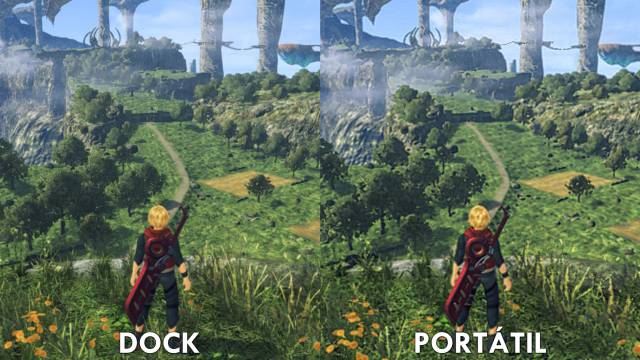
CONCLUSIÓN
Xenoblade Chronicles: Definitive Edition es una carta de amor a uno de los mejores juegos de la historia reciente de Nintendo. Y también a uno de los más importantes. Mientras esperamos por la secuela de Breath of the Wild o por el siguiente proyecto de Monolith Soft –sea otro Xenoblade o algo nuevo–, el regreso de este clásico de Wii sirve para recordar el punto de inflexión que supuso para la compañía japonesa. Su escala y libertad se convirtieron en el modelo a seguir por juegos que ahora le superan en algunos apartados porque es ley de vida. Porque la experiencia y la tecnología empujan el diseño hacia delante. Y porque la alternativa, pensar que ya habíamos tocado techo, sería bastante más triste que descubrir que algunos de sus elementos ahora se han podido quedar un poco anticuados. Además, es la clase de mal menor que uno encuentra cuando quiere sacar punta, porque no eclipsa el gran trabajo actualizando el apartado gráfico y aplicando montones de mejoras al funcionamiento de las misiones. Todavía hay algunas cosas con margen de mejora, y el rendimiento portátil vuelve a agriar un poco la fiesta, pero la experiencia es indiscutiblemente superior a la ofrecida en Wii antes incluso de tener en cuenta que el relanzamiento viene con más de diez horas de contenido extra en Future Connected. Si eras fan, lo seguirás siendo. Y si nunca lo has jugado, te espera uno de esos juegos que redefinen el concepto de épica.
LO MEJOR
- Ver a Bionis y a Mekonis rejuvenecidos por el extenso remodelado gráfico.
- Argumento muy sólido, con buen reparto y grandes revelaciones.
- Fantástica banda sonora con nuevos arreglos para la ocasión.
- Sistema de combate ágil y accesible con suficiente profundidad.
- Abundantes refinamientos en la interfaz y el rastreo de misiones.
- Future Connected: un epílogo inédito y bastante sustancial.
LO PEOR
- A pesar de la mejoría, gráficos y diseño a menudo quedan a la zaga de obras más recientes de Monolith Soft.
- La sencillez y reiteración de algunas secundarias pasa menos el corte que hace una década.
- Rendimiento portátil con altibajos, sobre todo en Future Connected.
Muy bueno
Juego de notable acabado que disfrutaremos y recordaremos. Una buena compra, muy recomendable para amantes del género. Está bien cuidado a todos los niveles.
